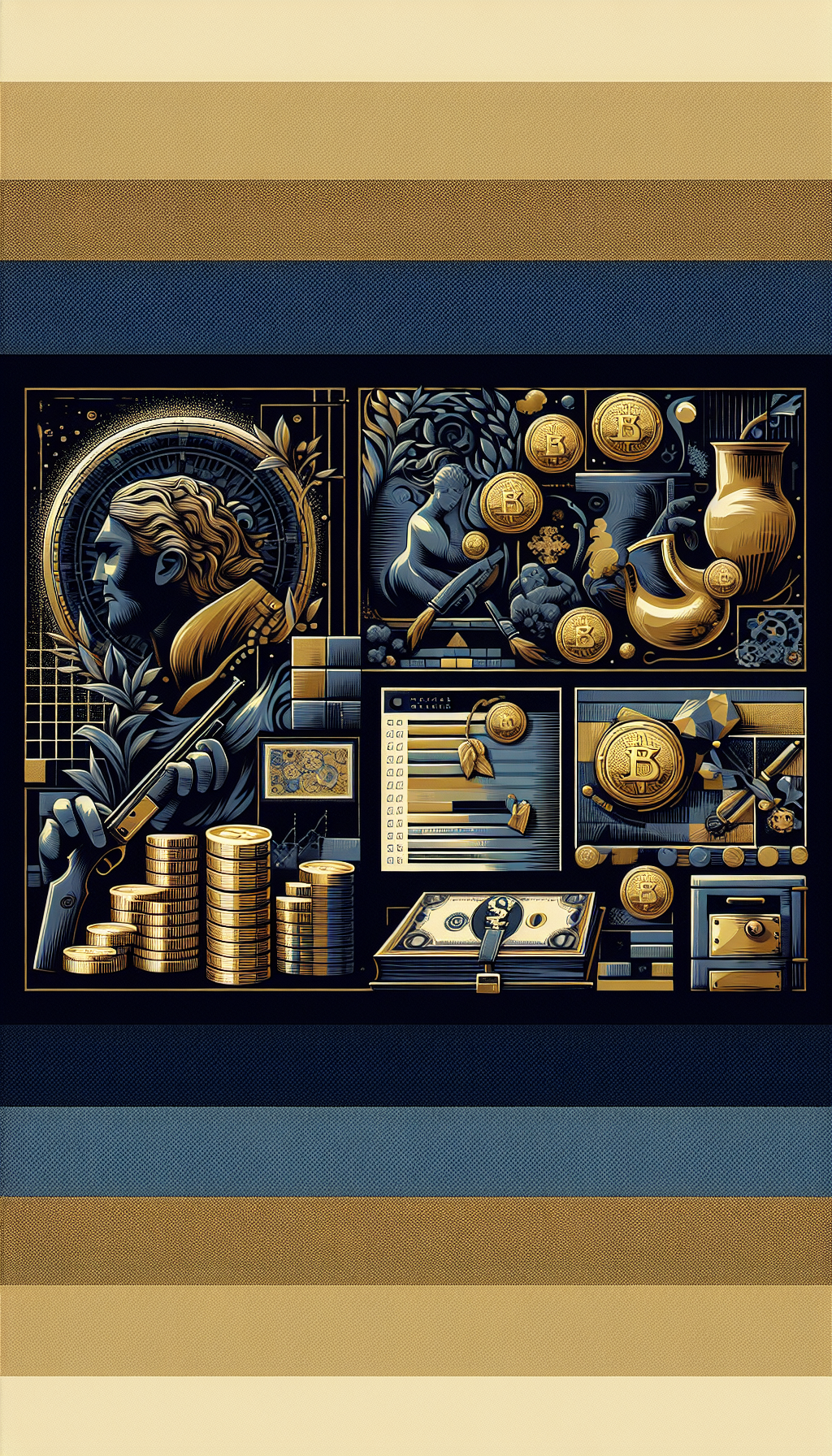Unlocking The Value Of Creativity A Guide To Free Online Art Appraisals
Free online art appraisals can be a smart first step toward understanding a painting, print, sculpture, or antique you own. They help you identify what you have, estimate a price range, and decide on next steps—without spending money up front. Yet they also come with limits: many “free appraisals” are preliminary opinions aimed at attracting consignments, not legally defensible valuations.
This guide explains what these services can and cannot do, how to prepare your submission, how to interpret the result, red flags to avoid, and when it’s time to pay for a formal appraisal.
What Free Online Appraisals Can—and Cannot—Do
Free appraisals are best at:
- Triage: Quickly establishing whether an item is decorative, collectible, or potentially significant.
- Market orientation: Providing a preliminary auction estimate based on similar recent sales.
- Identification clues: Suggesting artist attributions, medium, period, or region, especially when labels, signatures, or edition numbers are present.
- Consignment guidance: Indicating where and how to sell if you choose to pursue the market.
Free appraisals typically do not:
- Replace a formal valuation: They are not designed for insurance, estate tax, charitable donation, equitable distribution, divorce, or litigation.
- Include physical inspection or scientific testing: Condition calls, authenticating materials, and confirming attributions require specialized, often hands-on analysis.
- Guarantee accuracy or liability: Most providers qualify their responses as estimates, not appraisals compliant with professional standards.
- Determine authenticity definitively: High-value works often need provenance research, expert opinions, or technical analysis (e.g., pigment, paper, canvas, or toolmarks).
Use free estimates to learn and plan. Use paid, standards-based appraisals for legal, tax, or risk-transfer purposes.
How To Prepare A Strong Submission
The quality of the opinion depends on the quality of information you supply. Prepare a compact dossier:
- Measurements: Height x width x depth (in cm or inches). If framed, include image size and frame size.
- Medium and support: Oil on canvas; watercolor on paper; bronze; silver gelatin print; lithograph; woodcut; porcelain; mixed media. If unsure, describe observable traits (e.g., “textured brushwork,” “raised impasto,” “edition number in pencil”).
- Signature and inscriptions: Exact transcription and location (front lower right, verso, under the base). Include monograms, dates, dedication notes, edition numbers (e.g., 12/50), foundry marks, gallery stickers, exhibition labels, or inventory codes.
- Provenance: Where, when, and from whom acquired; previous owners; sales receipts; gallery invoices; auction catalog references; exhibition history; publication references; certificates of authenticity (with issuer).
- Condition: Note losses, tears, foxing, craquelure, dents, restorations, relining, revarnishing, replaced parts, patina changes, repairs to frames, or functioning of mechanical elements. If restored, provide dates and conservator notes if available.
- Subject, style, and period: Portrait, landscape, abstract; modern, post-war, contemporary; Arts & Crafts, Art Deco, Baroque, Edo-period, etc.
- Quantity and comparables: If you know of similar works or editions, mention them and any sale prices you’ve seen.
- Ownership and location: Helpful for market context and logistics; do not disclose sensitive personal info beyond what is necessary.
- Clear photos:
- Front, straight-on, evenly lit; add a ruler for scale if helpful.
- Back/verso, capturing stretcher bars, canvas, backing boards, labels, gallery stamps.
- Details: Signature, edition number, foundry mark, labels, texture/brushwork, any damage.
- Frame: Sometimes period frames add value; sometimes they’re decorative only.
Pro tip: Name files logically (Artist_Surname_Title_or_Subject_size_front.jpg). Keep image sizes reasonable but detailed enough for zoom.
Where Free Appraisals Typically Come From
Several sources offer free or low-friction opinions. Each has a distinct purpose:
- Auction houses: Specialist departments provide auction estimates to evaluate potential consignments. Expect a range (“$3,000–$5,000”) reflecting recent comparable sales, condition risk, and current demand. Turnaround ranges from hours to a week. Strong at market context; limited to their selling categories.
- Dealer galleries: Some dealers will opine informally, especially if they handle the artist or category. They may cite both retail and wholesale perspectives. Their goal is often to purchase or broker.
- Online appraisal platforms and forums: Generalist platforms collate images and data for a quick read; enthusiast forums may provide crowd-sourced insights. Accuracy varies with expertise; use them for orientation, not decisive conclusions.
- Museum or foundation resources: Catalogue raisonnés and artist foundations inform attributions and authenticity. These bodies rarely offer “free appraisals,” but their published criteria guide what evidence matters. Some foundations will pre-screen images; fees may apply for formal opinions.
- AI-aided identification tools: Useful for attribution clues and pattern recognition across image databases. Treat outputs as leads requiring expert verification.
Understanding the provider’s incentive explains the result you’ll get. Auction houses estimate what they think they can sell it for now. Dealers judge buy/sell margins. Forums share collective experience with uneven reliability.
Understanding Value Types And Market Context
Not all “value” is the same. Match the value type to your purpose:
- Auction estimate: A pre-sale range at public auction, typically hammer price expectation excluding buyer’s premium. Reflects current demand with no guarantee.
- Fair Market Value (FMV): The price a willing buyer and seller would agree upon in the open market, with neither under compulsion and both having reasonable knowledge. Used for estate and charitable contribution purposes in many jurisdictions.
- Retail Replacement Value (RRV): What it would cost to replace the item with a comparable example in a reasonable amount of time at retail. Used for insurance scheduling; generally higher than FMV.
- Wholesale/dealer purchase price: What a dealer might pay, reflecting their risk and carrying costs; often significantly lower than retail.
- Private sale asking price: A retailer or collector’s list price; not necessarily realized value.
Market drivers to weigh when you read a free estimate:
- Attribution confidence: “By,” “Attributed to,” “Circle of,” “School of,” or “After” radically change value. Insufficient documentation shifts opinions downward.
- Condition and originality: Over-cleaning, tears, patches, relining, losses, or replaced parts affect value. Moulded, cut-down, or heavily restored frames may reduce or occasionally enhance appeal.
- Rarity and subject matter: Iconic subjects and rare editions command premiums; late, repetitive, or atypical works may lag.
- Medium and format: Oil versus print; unique works versus editions; monumental versus small; portfolio sets versus single sheets.
- Edition details (for prints): Edition size, proof types (AP, HC, TP), publisher, printer, paper, watermark, state or variant, and whether the signature is in plate or in pencil.
- Provenance and exhibition history: Prestigious galleries, museums, or notable collections enhance marketability; gaps or problematic histories deter buyers.
- Geography and timing: Regional artists may sell best near their collector base. Seasonality, art fair calendars, and economic cycles influence demand.
- Liquidity and costs: Selling channels carry commissions, premiums, reserves, photography, shipping, and insurance. A “$5,000” auction result isn’t $5,000 net to you.
Your free online estimate often represents an auction-oriented perspective. If you need insurance or FMV, request that the provider clarify the value basis.
Quick Checklist Before Requesting A Free Appraisal
- Measure the artwork (image and frame) and note units.
- Identify medium, support, and any edition numbers.
- Photograph front, back, signatures, labels, and condition issues.
- Transcribe signatures and inscriptions exactly.
- Gather provenance: receipts, emails, catalog pages, certificates.
- Describe condition honestly, including restorations.
- State your goal: curiosity, sale, insurance, estate planning.
- Indicate location (city/country) and readiness to ship or consign.
- Ask for the value basis (auction estimate, FMV, or replacement).
- Save all correspondence and estimates for your records.
Red Flags, Data Hygiene, And Ethics
Free isn’t free if you step into a bad deal. Watch for:
- Guaranteed buy offers before inspection: Legitimate buyers rarely commit to a high price sight-unseen for unique works.
- Pressure tactics: “Act today or lose the opportunity,” or pushing you to set an unreasonably low reserve.
- Undervaluation for quick flip: A lowball “cash offer” alongside a much higher public estimate elsewhere is a signal to get more opinions.
- Vague credentials: If a provider won’t name specialists or categories, treat opinions cautiously.
- Pay-to-release: “Free appraisal” that requires payment to see the number is a bait-and-switch.
Data and privacy:
- Watermark sensitive photos if posting in public forums; keep high-res images for vetted experts.
- Remove or obscure home addresses on labels in public postings; retain unaltered images for private expert review.
- Keep a digital file with all materials and dates for provenance continuity.
Legal and ethical considerations:
- Cultural property and restricted materials: Some objects (e.g., sacred artifacts, items with protected wildlife materials) have export/import restrictions or repatriation claims. Compliance matters both legally and ethically.
- WWII-era and conflict-looted art: Provenance gaps between 1933–1945 or from conflict zones require heightened diligence.
- Artist resale rights and copyright: Resale royalties apply in some jurisdictions; reproducing images for sale listings may have limitations.
- Foundry copyrights and casts: Posthumous or unauthorized casts affect legitimacy and value in sculpture.
When in doubt, ask the appraiser to flag any regulatory risks associated with your object.
When To Move From Free To Formal
Free appraisals are triage. Move to a paid, standards-based valuation when:
- You need insurance scheduling or claim support: Insurers expect a Retail Replacement Value with proper documentation.
- Estate, donation, or tax reporting is in play: Many jurisdictions require a Fair Market Value report from a qualified appraiser and, above certain thresholds, additional forms or comparables.
- You plan to donate to a museum or institution: Institutions often require independent valuations and may need condition reports.
- The item is likely valuable (a common threshold is $5,000–$10,000+): The potential gain from accuracy outweighs the appraisal fee.
- Authentication is uncertain: Pay for expert opinions, catalogue raisonné review, or technical analysis as appropriate to the artist or period.
- You are involved in disputes: Courts expect USPAP- or equivalent-compliant reports with methodology and comparables.
Choosing a professional:
- Look for appraisers who specialize in your category (e.g., Old Masters, American Modernism, Asian art, photography, decorative arts).
- Ask for USPAP compliance and sample redacted reports.
- Clarify fee structure: Hourly or flat; no contingency fees tied to value for formal appraisals.
- Request scope: Value type, intended use, inspection method (in-person vs. virtual), inclusion of comparables and market analysis.
- Expect to supply the same materials as for a free appraisal—plus access for inspection.
Costs vary by region, category complexity, and whether site visits are required. For many works, fees are modest compared to the risk of under- or over-insuring or paying unnecessary taxes.
Making The Most Of A Free Appraisal
To turn a free opinion into actionable insight:
- Compare estimates from more than one specialist when stakes are high.
- Ask the provider to specify the value basis and date of valuation.
- Request the comparables underpinning the range; note the sale dates and conditions of those comps.
- If considering consignment, discuss commission, seller’s fees, photography, reserve strategy, shipping/insurance responsibilities, and timing.
- If you’re selling privately, use the estimate as a guide but adjust for net proceeds and time-to-sell.
Remember that markets move. An estimate today may be stale in six months, especially for rapidly trending artists or fragile categories.
FAQ
Q: How accurate are free online art appraisals? A: For mainstream categories with robust comparables, auction-oriented estimates can be directionally accurate. Accuracy falls when attribution is uncertain, condition is complex, or the artist is thinly traded. Treat them as educated ranges, not guarantees.
Q: What’s the difference between an appraisal and an estimate? A: An estimate is an informal opinion of potential selling price, often for auction. A formal appraisal is a written report with methodology, intended use, and a specific value type (FMV, RRV), prepared by a qualified appraiser and suitable for insurance, tax, or legal purposes.
Q: Do frames add value? A: Sometimes. Period frames by known makers, or frames integral to the artist’s intent, can add value. Decorative or damaged frames may contribute little and can even detract if they obscure the work or complicate shipping.
Q: Will restoration help value? A: Conservation can stabilize and improve marketability, but unnecessary or aggressive restoration can reduce value. Get a conservator’s estimate and share it with the appraiser; sometimes selling “as is” is wiser than investing in treatment.
Q: How long does a free appraisal take? A: Simple requests may get a same-day response; more complex items or busy departments can take several days to a week. Provide complete information and clear photos to speed review.
By understanding the scope of free online art appraisals, preparing a thorough submission, reading results in the right context, and knowing when to step up to a formal report, you’ll navigate the art and antiques market with confidence—turning curiosity into informed decisions and better outcomes.




